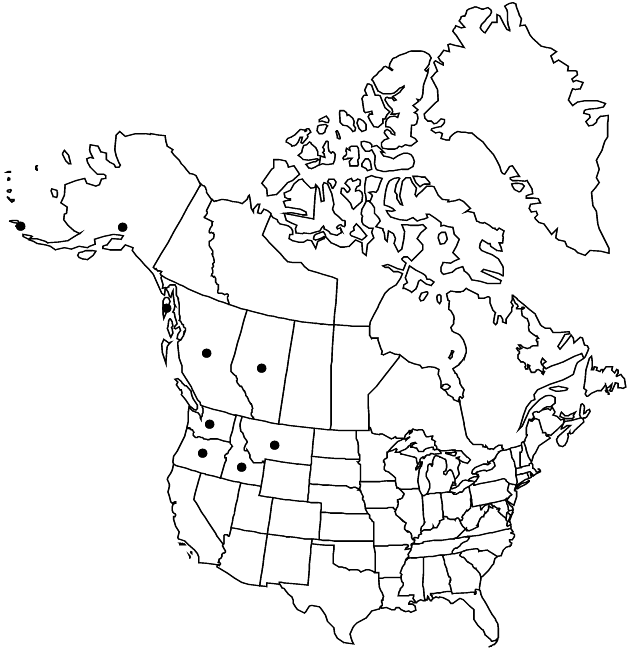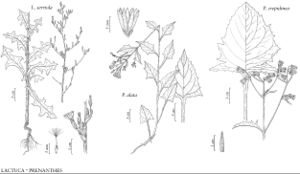Prenanthes alata
Syn. Pl. 4: 1309. 1847.
Plants 15–80 cm; taproots slender to thickened, tuberous. Stems 1(–10), erect or ascending, green to purple, usually simple, glabrous or glabrate proximally, tomentulose distally. Leaves: proximal present at flowering; petioles winged (2–6 cm); blades triangular to irregularly elliptic, 3–25 × 1–7 cm, thin or slightly coriaceous, bases abruptly constricted, truncate to slightly hastate, margins irregularly dentate or coarsely serrate, apices acute to acuminate, faces glabrate; distal sessile, ovate to lanceolate, reduced. Heads (10–17) in broad, corymbiform arrays, lateral branches often elongate and overtopping main stems. Involucres narrowly campanulate, 10–13 × 5–6 mm. Calyculi of 2–3, dark green, lanceolate or subulate bractlets 1–3 mm, glabrous or finely tomentulose. Phyllaries 8, green to dark green, lanceolate, 8–11 mm, margins scarious, apices acute, finely tomentulose. Florets 7–16; corollas white to purplish, 9–16 mm. Cypselae brown to light tan, subcylindric, 4–7 mm, weakly 7–10-ribbed; pappi pale yellow to dull white, 8–10 mm. 2n = 16.
Phenology: Flowering Jun–Sep.
Habitat: Stream banks, mountain springs, seeps, cliffs near shore, moist shady places
Elevation: 0–1500 m
Distribution

Alta., B.C., Alaska, Idaho, Mont., Oreg., Wash.
Discussion
Prenanthes alata is recognized by its relatively small size, elongate and winged petioles, triangular-hastate leaf blades, heads in broad corymbiform arrays, and dark green, finely tomentulose phyllaries.
Selected References
None.
